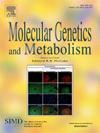法布里病-肾细胞癌的危险因素?-案例系列
IF 3.5
2区 生物学
Q2 ENDOCRINOLOGY & METABOLISM
引用次数: 0
摘要
法布里病(FD)是一种x连锁溶酶体积存病,其特征是鞘糖脂球三烷基神经酰胺(Gb3)在包括肾脏在内的多个器官的溶酶体中积累。有趣的是,我们观察到FD患者的肾细胞癌(RCC)发生率高于预期。方法在英国和荷兰的两个溶酶体贮积症(LSD)国家专家中心进行回顾性观察研究,共治疗520例FD患者,其中289例为经典表型,231例为非经典“心脏变异”表型。结果在10例附加诊断为RCC的患者中,发病率为11/520(相当于70.5/100000/年)。RCC诊断时的中位年龄(IQR)为55岁(39-59岁)。5/10是偶然发现的。6/289例(2.1%)典型法布里病患者和5/231例(2.2%)非典型表型患者发生RCC。血浆溶索- gb3浓度中位数(范围)为21.6 (2.9-95.6 nmol/L)。55%的rcc在开始疾病改善治疗前被诊断出来,其余的在开始治疗后5-18年被诊断出来。最常见的亚型是clear-cell-RCC(7/11),其中7例患者为WHO/ISUP 2级或以上肿瘤。3例为乳头状肾细胞癌(1例在27岁和39岁时两次发作)。结论FD患者的RCC年发病率高于全球发病率峰值(70.5 vs 4.6/100000/年),且发生年龄较轻。FD可能是RCC的独立危险因素。这表明对FD患者进行RCC常规筛查可能是有益的。关键点:法布里病可能是肾细胞癌的独立危险因素。已知情况:累及肾脏,主要是进行性慢性肾病(CKD),是法布里病的一种众所周知的表现。这项研究补充说:我们的研究结果表明,FD患者的RCC显著增加。潜在影响:GLA基因变异增加RCC风险的机制的进一步研究可能会增强我们对RCC病理生理学的理解,并为开发新的治疗方法提供信息。本文章由计算机程序翻译,如有差异,请以英文原文为准。
Fabry disease - a risk factor for renal cell cancer? - case series
Introduction
Fabry disease (FD) is an X-linked lysosomal storage disease characterised by glycosphingolipid globotriaosylceramide (Gb3) accumulation in the lysosomes of multiple organs including the kidneys. Anecdotally we observed a higher-than-expected incidence of renal cell carcinoma (RCC) in FD patients.
Methods
Retrospective, observational study at two specialist national centres for lysosomal storage disorders (LSD) in the UK and Netherlands looking after a total of 520 patients with FD, 289 with a classical phenotype and 231 with non-classical ‘cardiac variant’ phenotype.
Results
There were 11/520 (equivalent 70.5/100000/year) incidences in 10 patients with an additional diagnosis of RCC. The median (IQR) age at RCC diagnosis was 55 (39–59) years. 5/10 were identified incidentally. RCC affected 6/289 (2.1 %) patients with classical Fabry disease and 5/231 (2.2 %) with the non-classical phenotype. The median (range) plasma lyso-Gb3 concentration was 21.6 (2.9–95.6 nmol/L). 55 % of RCCs were diagnosed before starting disease modifying treatment, the remaining were diagnosed 5–18 years after the start of treatment. Commonest subtype was clear-cell-RCC (7/11 incidences with 7 patients having WHO/ISUP grade 2 or above tumours. 3 had papillary-RCC (1 had two episodes at age 27 and 39).
Conclusion
The annual incidence of RCC in patients with FD was higher than the peak global incidence (70.5 vs 4.6/100000/year) and occurred at a younger age. FD may be an independent risk factor for RCC. This suggests that routine screening for RCC may be beneficial in patients with FD.
Key learning points: Fabry disease may be an independent risk factor for renal cell carcinoma.
What was known: Renal involvement, primarily progressive chronic kidney disease (CKD) is a well-known manifestation of Fabry disease.
This study adds: Our findings indicate a significant increase in RCC among patients with FD.
Potential impact: Effective screening tool will be available for patient with this genetic condition and further research into the mechanisms by which GLA gene variants increase RCC risk may enhance our understanding of RCC pathophysiology and inform the development of new therapeutic approaches.
求助全文
通过发布文献求助,成功后即可免费获取论文全文。
去求助
来源期刊

Molecular genetics and metabolism
生物-生化与分子生物学
CiteScore
5.90
自引率
7.90%
发文量
621
审稿时长
34 days
期刊介绍:
Molecular Genetics and Metabolism contributes to the understanding of the metabolic and molecular basis of disease. This peer reviewed journal publishes articles describing investigations that use the tools of biochemical genetics and molecular genetics for studies of normal and disease states in humans and animal models.
 求助内容:
求助内容: 应助结果提醒方式:
应助结果提醒方式:


